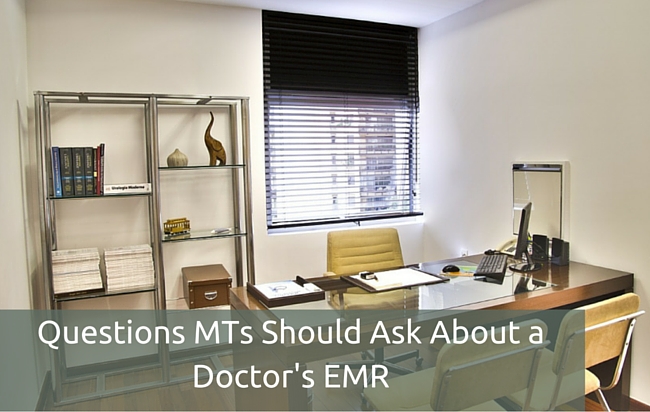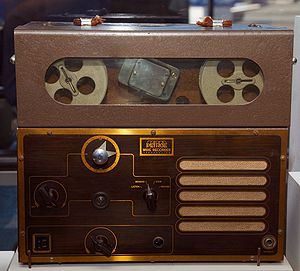by Richard Viets | Jun 8, 2016 | Medical Transcription

Some doctors are now asking MTs to enter the data directly into their EMR (electronic medical records) system. When considering offering this service transcription services should consider the following:
Cloud or Premises EMR?
First, is the EMR cloud-based or installed on the premises? And what is the name of the product? Find this out and do a web search on the product to learn the basics. If you are able to visit the doctor’s office get a demo.
If it’s a cloud-based system that can be accessed via a web browser across the internet you will need a login for the practice in order to enter data.
If the EMR is installed on the premises remote access is more complicated, at least in the initial setup phase. The typical solution is to use a VPN (virtual private network). If they don’t have a VPN already their IT staff would have to deploy one. The MT will likely have to install or configure additional software themselves. As an alternative to a full-blown VPN you might consider using a remote desktop application such as Microsoft’s free Remote Desktop Connection.
After you solve the connectivity problem there remain other issues to consider. The first is training on the EMR. How will you get trained and how much time will you have to invest?
Getting Paid For Extra Workload
 The second, more long-term issue is how much extra time, on average, will it take you to enter data into an EMR versus typing up a note? Most MTs charge by the line but when you are entering data into an EMR there aren’t really any “lines”. In general, for the MT to be properly compensated for the extra time it takes to enter data into an EMR the MT will want to charge more for each dictated “note” (but of course the doctor will want to continue paying the same as before). (more…)
The second, more long-term issue is how much extra time, on average, will it take you to enter data into an EMR versus typing up a note? Most MTs charge by the line but when you are entering data into an EMR there aren’t really any “lines”. In general, for the MT to be properly compensated for the extra time it takes to enter data into an EMR the MT will want to charge more for each dictated “note” (but of course the doctor will want to continue paying the same as before). (more…)
by Richard Viets | May 27, 2016 | HIPAA, Medical Transcription, PHI

Known to some as the “Wall of Shame” or the HHS Breach Portal, the Health and Human Services page featuring failures to protect Protected Health Information (PHI and ePHI) in a HIPAA-compliant manner is one kind of web publicity no health care provider or organization wants.
1500 HHS Breach Portal Reports (And Counting)
As of the end of April 2016, there were more than 1,500 reports. There are 20 from April 2016 alone.
The HITECH Act requires breaches of unsecured protected health information affecting 500 or more individuals to be posted. Types of breaches include:
- Hacking/IT Incident
- Improper Disposal
- Loss
- Theft
- Unauthorized Access/Disclosure
The most common causes of a breach so serious it requires notification to HHS include:
- Theft of desktop computers or network servers
- Theft or loss of laptops or portable electronic devices
- Hacking incidents
Those are the sorts of electronic and device issues you might expect, but there can be non-electronic problems as well (think dumpster-diving as a result of “improper disposal”):
- Failing to properly secure or destroy paper printouts
- Failure to secure or destroy films (x-rays, etc)
Actions To Take To Stay OFF the HHS Breach Portal
This Basic Security Checklist for the Small Healthcare Practice can provide sound advice on how to prevent problems. Many of the “best practices” are obvious (use strong passwords and change them often, use anti-virus protection, use a firewall…) but others involve relatively new issues, and foremost among those is the need to protect mobile devices that either contain ePHI or provide a means of accessing a server or EMR. Laptops are easy to lose, smartphones even more so.
The My Docs Online HIPAA page tells you what we do to protect ePHI, and includes guidelines for the correct use of My Docs Online by medical professionals.
Remember, the HIPAA Security Rule is not just about computers and networks. The rule specifies a series of administrative, and physical, as well as technical safeguards for covered entities to use to assure the confidentiality, integrity, and availability of electronic protected health information.
Try My Docs Online Free Today. No Credit Card Required.
by Richard Viets | May 10, 2016 | Medical Transcription

The increase in use of Electronic Medical Records (EMR) systems has led to a decrease in the traditional provider pattern of Dictate/Transcribe/Print. However, Medical Transcription is still here because several important segments of the medical community are likely to continue using dictation and transcription for the foreseeable future. These include providers needing to communicate with professionals outside the practice. Physicians doing a second opinion, or exams for insurance companies (life insurance, accidents) or workers comp and disability claims, are all key users of traditional dictation and transcription services.
Medical Transcription Is Still Here Because MDs Shouldn’t Enter Data
 Another reason Medical Transcription is still here is because many doctors have quickly grown tired of spending a good part of their day entering data into a computer (more…)
Another reason Medical Transcription is still here is because many doctors have quickly grown tired of spending a good part of their day entering data into a computer (more…)
by Steve | Dec 4, 2009 | Medical Transcription

Image via Wikipedia
We spend a great deal of time on the telephone with trial users who will be using our Transcription Edition to move large voice files. Many of those users have physician clients who are new to digital transcription and need advice on what equipment to purchase. We’re often asked for specific advice on what digital recorders these clients can buy so in an effort to provide a continuously updated answer to that question we’ve created an Amazon store for the equipment that My Docs Online and its users recommend.
You can access the My Docs Online Transcription store here. When you buy through the store your order will be processed and fulfilled by Amazon.com. We will earn a small commission on items sold through the store. If you don’t want to purchase through Amazon, just note the specific model number and go to your local office supply store. You should be able to buy the equipment there as well.
The My Docs Online service will work with any digital recorder, but not all digital recorders include the software to move the voice files from the device to the computer. When purchasing a new digital recorder just make sure it comes with that software. Our recommendations do come with all necessary software.
If you’re a transcriptionist trying to move a physician from tape to digital you might also be interested in a report we wrote last year on the subject. That report can be downloaded for free here.

 The second, more long-term issue is how much extra time, on average, will it take you to enter data into an EMR versus typing up a note? Most MTs charge by the line but when you are entering data into an EMR there aren’t really any “lines”. In general, for the MT to be properly compensated for the extra time it takes to enter data into an EMR the MT will want to charge more for each dictated “note” (but of course the doctor will want to continue paying the same as before). (more…)
The second, more long-term issue is how much extra time, on average, will it take you to enter data into an EMR versus typing up a note? Most MTs charge by the line but when you are entering data into an EMR there aren’t really any “lines”. In general, for the MT to be properly compensated for the extra time it takes to enter data into an EMR the MT will want to charge more for each dictated “note” (but of course the doctor will want to continue paying the same as before). (more…)




